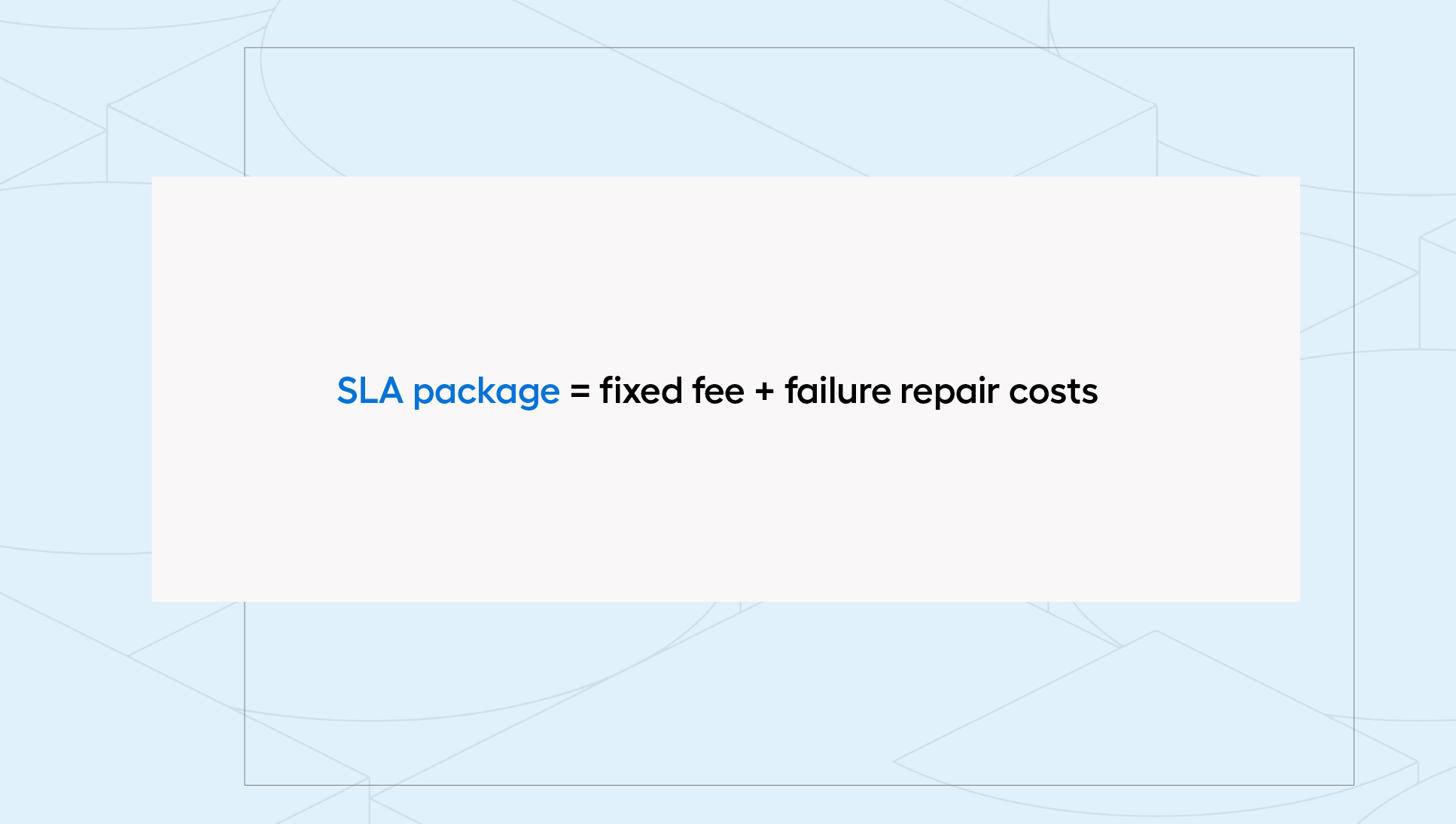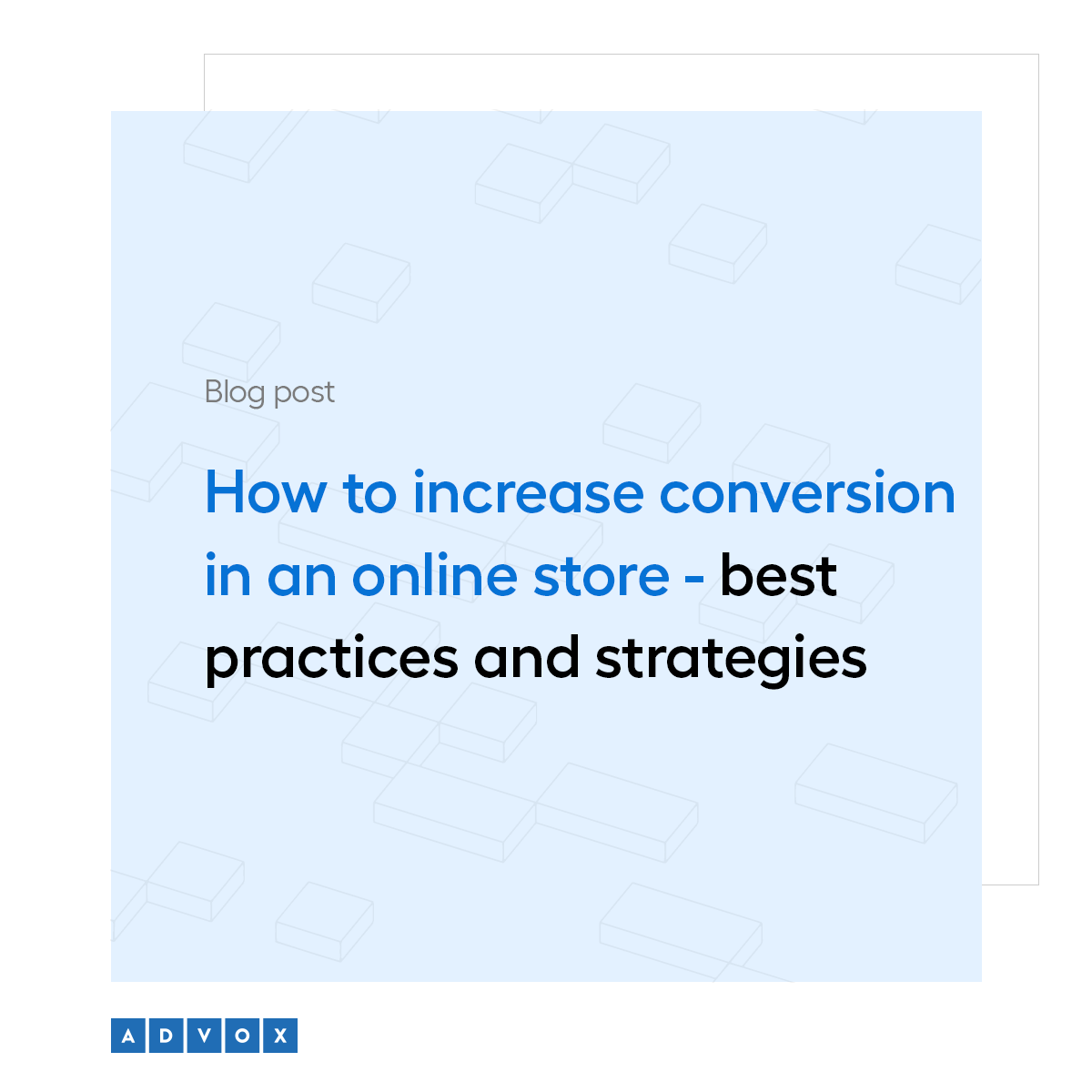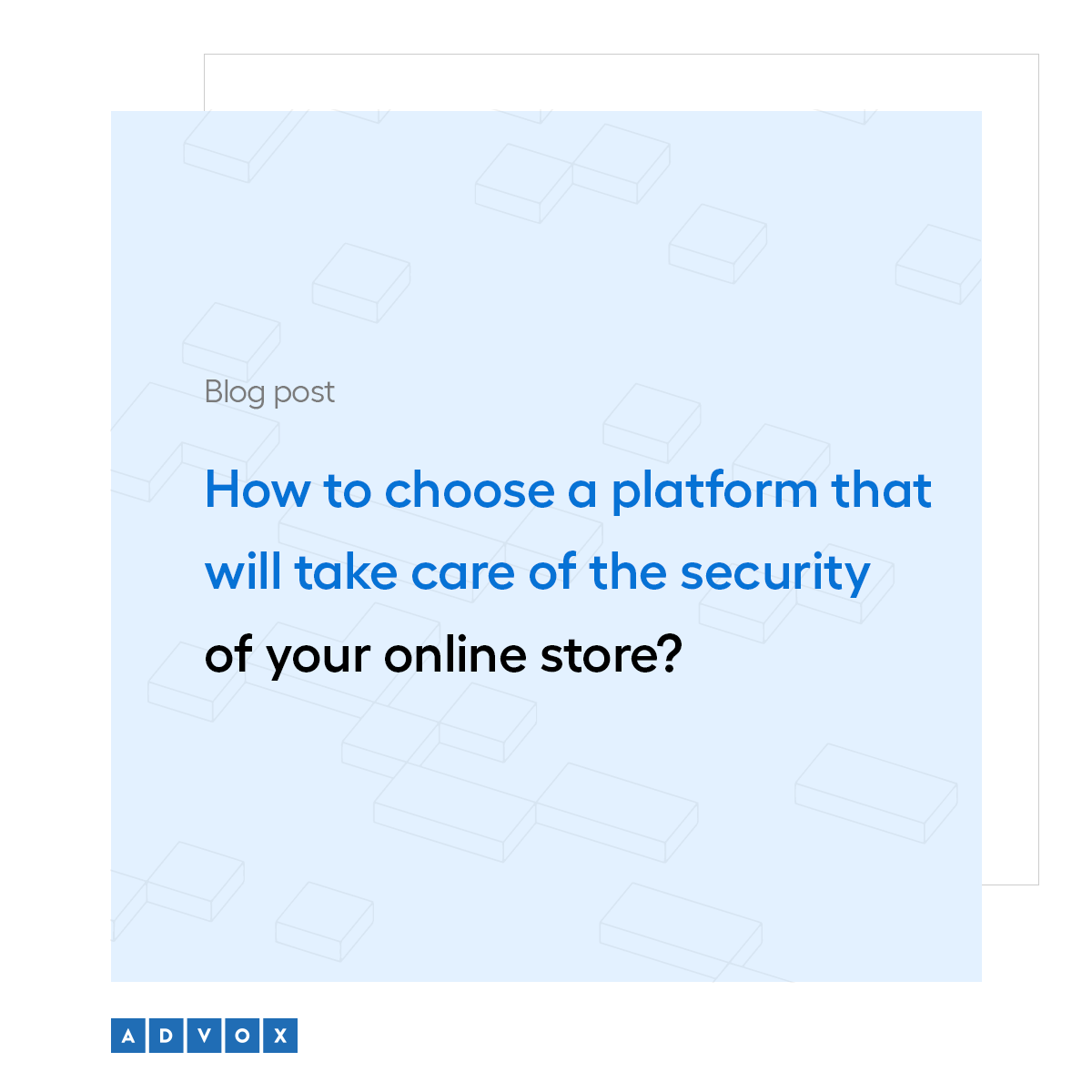The SLA agreement- what is it and why should it not be missing in your online store?
Spis treści
- Why do you need an SLA for an online store?
- The SLA in IT - what to pay attention to when signing an SLA?
- Types of errors in an SLA agreement
- What should an SLA agreement for eCommerce include?
- SLA in practice - how does the fault reporting process work?
- Why should you opt for an SLA?
- What are the disadvantages of an SLA?
- Ensure uninterrupted operation of your online store - enter into an SLA agreement
- monitoring the store's operation,
- technical support,
- IT infrastructure maintenance,
- timely repair of failures.
- Response time (acknowledgment of the report) - the time the IT service provider has to acknowledge the report and diagnose the problem related to the reported failure. It should be as short as possible to minimize the negative effects of the failure.
- Error repair time - the time frame provided for finding a target solution for the diagnosed error. This time should be adapted to the type and complexity of the error.
- Workaround - in case the error that has occurred requires more work, the so-called workaround period is also distinguished. During this time, the developer works to quickly resolve the critical problem. Once the store is restored to operation, the bug is passed to the project team, which implements the final solution.
- Critical error - it prevents the proper functioning of the entire system for a significant majority of users. An example could be a non-functional payment button in the shopping cart.
- Standard (common) error - minor issues that do not prevent the use of the store but may negatively impact user comfort. An example could be incorrectly displayed product graphics or minor navigation problems.
- Serious (or urgent) error - it does not have the nature of a critical error but significantly limits the system's capabilities. This category may include issues with logging in or searching for products.
- defect - problems that are not errors but negatively affect user experience. These could be, for example, pages loading too slowly or minor translation errors.
- Response time to reported faults, including acknowledgment time
- error and fault repair time
- workaround time for more complex faults
- store availability percentage (e.g., 97% annually)
- detailed description of IT services provided (e.g., store monitoring, error resolution, software updates)
- error reporting procedures
- communication method (e.g., phone, email, online form)
- contact persons
- possibility of extending the SLA agreement with additional services
- definition of the scope and prices of additional services
- maintaining high platform quality - by defining error handling procedures, the store owner can be assured that their eCommerce platform will operate reliably, resulting in positive customer experiences and profit generation.
- preserving sales continuity - an SLA agreement minimises the risk of downtime by ensuring quick identification and rectification of errors, thereby maintaining sales continuity.
- enhanced trust among customers - the SLA becomes a sort of indirect guarantee of service quality, strengthening the brand's positive image and encouraging customers to make purchases. A reliably functioning online store builds trust among customers.
- expanded guarantees - an SLA agreement can serve as an extension of the warranty offered by the platform provider. SLA may include a broader range of services, faster response and error resolution times, as well as contractual penalties for non-compliance with the terms of the agreement.
- additional costs - fees under the SLA cover the provider's compensation for services rendered (fixed fee) as well as hourly costs associated with handling reports.
- limited flexibility - an SLA agreement primarily focuses on guaranteeing the availability and smooth operation of the platform, concentrating on rectifying reported errors and faults. Typically, it should not include the introduction of new features, enhancements, or platform modifications (this is covered by a maintenance agreement). This means that within the SLA, the provider is not obliged to implement changes and updates (unless the agreement itself expands on this), which do not directly result from reported errors.
- potential claims - if the service provider fails to meet the terms of the SLA agreement, the client may pursue their claims, which involves time and costs. However, it's worth noting that pursuing claims can be challenging if the SLA does not contain precise provisions and clearly defined contractual penalties. Lack of precise provisions may lead to disputes regarding the interpretation of the agreement and hinder the pursuit of claims in case of its violation.
The implementation of the online store project has been completed, it's now operating in the online space and selling – at this point, the collaboration between the eCommerce owner and the software house could end. However, launching the online store is just the beginning of the journey. To ensure the platform operates smoothly and generates profits, it's necessary to ensure its reliability and security. This is where the SLA (Service Level Agreement) comes into play. What exactly do SLA services entail? What should you pay attention to when entering into an agreement to ensure high-quality operation of the e-store? To discover practical tips, read this article. Have a read!
Why do you need an SLA for an online store?
An SLA agreement is a contract between the owner of an online store and a software house company, which regulates the terms of cooperation after the completion of the store implementation phase. Depending on individual agreements, it determines the scope of services aimed at maintaining the proper functioning of the platform at all times. This may include:
The SLA agreement also specifies in detail the standards for service delivery, utilizing various indicators (such as system availability, number of detected errors, response time to reports, or periods of increased readiness for seasonal sales), which enable monitoring and evaluation of the level of service provision. Additionally, this document includes remedies and potential penalties in case either party fails to meet the agreement's conditions. Thus, the SLA agreement ensures not only the stability and uninterrupted operation of the online store but also a clear regulation of the rights and obligations of both parties in the cooperation.
The SLA in IT - what to pay attention to when signing an SLA?
The Service Level Agreement (SLA) often takes the form of a monthly maintenance package, which is convenient for both the client and the service provider, enabling ongoing control over the course of cooperation. However, to ensure that the agreement will be satisfactorily fulfilled, it is necessary to precisely define the terms and framework of cooperation in its provisions.
The SLA package consists of two parts. The first part is a fixed cooperation fee, which serves as compensation for the software house's constant readiness to resolve failures. Depending on the agreements, the support team may be available at different time intervals and for varying numbers of hours and days per week (e.g., 12/5, 24/5, 24/7). The final cost of support within the SLA also depends on the actual occurrence of failures and the number of developer hours dedicated to restoring the store to smooth operation.

Moving on to the content of the agreement and the scope of services, the most crucial concept in the context of SLA is the availability of the online store, which is most often defined in a percentage manner. What does this concept mean? The accepted value (usually above 95% on an annual/monthly scale) determines to what extent the store should operate without errors. The remaining value is the maximum allowable downtime. For example, with a 2% error margin on an annual scale, the store may be offline for a total of about 174 hours. A higher percentage of availability established in the SLA agreement thus means greater stability of store operation. However, it is essential to remember that it is equally important to consider objective risk and establish an error margin to allow for realistic resolution of potential problems.
In addition to availability, response time is extremely important. The way it is accounted for is crucial because every moment of store downtime generates losses - both financial and reputational (e.g., in the form of customer frustration). SLA agreements most often adopt two values according to which time is accounted for:
Types of errors in an SLA agreement
What do you consider an error in an online store? There can be as many answers to this question as there are people you ask. After all, practically any irregularity can be subjectively considered an error. For this reason, another crucial element in the SLA agreement is the method of categorising errors. This division serves as a starting point for determining response and repair times, as well as the priority with which a particular problem will be addressed. To streamline the handling of reports and provide quick assistance to clients, errors are commonly divided into two categories:
However, the division and definitions of errors can be expanded and modified as desired. Often, a simple division into critical and standard errors is sufficient for proper error categorization and report acceptance. However, it happens that the parties to the agreement decide to expand this catalogue to include categories such as:
This is just an example of error categorization - the final division depends on individual agreements and negotiations. Properly categorised errors in an SLA agreement allow for effective management of reports, rapid identification of critical issues, and prioritised troubleshooting, resulting in high availability and stable operation of the online store.
What should an SLA agreement for eCommerce include?
Thoroughly constructing an SLA agreement with all essential elements allows for the creation of a solid foundation for cooperation between the owner of the online store and the software house company. This translates into peace of mind for the store owner, meaning confidence in the stable operation of the store and satisfaction with the services obtained. In summary, what elements should an SLA agreement in IT include? You'll find them in the table below.
| Element of the Agreement | Detailed Description |
|---|---|
| Time |
|
| Scope of services |
|
| Responsibilities and duties |
|
| Quality parameters | error categorization (e.g., critical, serious, standard) |
| Additional services |
|
| Penalties | specification of contractual penalties for non-compliance with SLA terms (e.g., financial penalties, cost reimbursement, additional services) |
| Termination procedure | definition of conditions and deadlines for terminating the SLA agreement (including the possibility of termination in case of flagrant breach of terms by one of the parties) |
The above elements form the basis of a well-constructed SLA agreement for eCommerce. Their precise definition and specification allow for the creation of transparent and satisfying cooperation for both parties. However, it's also worth emphasising the need to tailor the agreement individually to specific needs and conditions of the online store operation.
SLA in practice - how does the fault reporting process work?
Now that you're familiar with the elements of an SLA agreement and understand the individual concepts, it's time to delve into some practicalities. How does the process of reporting faults actually unfold? Let's analyse a sample "life cycle of an error."
The first step is reporting the error. In this case, the customer chooses the most convenient and fastest form (e.g., phone contact via a dedicated number, email, report in the Jira system) - the choice doesn't matter much because all systems are integrated. Then, the reported fault is assigned to a developer who proceeds to identify the error. At this stage, they determine the source of the problem, prioritise it, and plan further actions. Depending on these determinations, the error may be rectified during normal working hours or according to the specified response time in the SLA.
If the error is complex, the support team begins working on a temporary workaround to avoid a critical situation. Subsequently, steps are taken to find the ultimate solution to the problem. Every decision is reported in real-time, providing the customer (the owner of the e-store) with certainty about the current status of the report. Regardless of the chosen path, the goal remains the same - restoring the store to normal operation to enable customers to shop without disruptions.
Why should you opt for an SLA?
Entering into an SLA agreement ensures mutual understanding of the requirements related to cooperation and protects both parties to the agreement - both the client and the provider, and in case of conflicts, it defines remedies and helps avoid potential misunderstandings that would result in losses. What other benefits does the decision to enter into such an agreement guarantee?
What are the disadvantages of an SLA?
An SLA agreement is a legal confirmation that the platform will always be available and errors will be rectified in a timely manner. The store owner knows what to expect, and the software house knows its scope of responsibilities and duties - this arrangement seems free from flaws. Or does it? With a properly drafted agreement, flaws shouldn't arise, but it's worth noting that an SLA agreement isn't just benefits, but also:
A thorough analysis of needs, selecting the right IT service provider, and carefully crafting an SLA agreement allow minimising the risks associated with SLA flaws and maximising the benefits of this form of cooperation. However, it should be remembered that behind the concept of SLA, there is no single, standardised solution. Ultimately, the effectiveness of a maintenance agreement depends on properly tailoring its terms to the specifics of the e-store, available budget, and individual needs.
Ensure uninterrupted operation of your online store - enter into an SLA agreement
SLA agreements are increasingly being embraced by online stores - they provide solid protection for the stability and reliability of the online store's operation. However, to fully benefit from its advantages, it's crucial to precisely define the terms of cooperation and understand its essence. A properly constructed SLA agreement, entered into with an experienced software house, allows for ensuring uninterrupted operation of the eCommerce platform and clear regulation of the rights and obligations of both parties.
If you value reliable eCommerce and want to avoid sales downtime - reach out to us!







